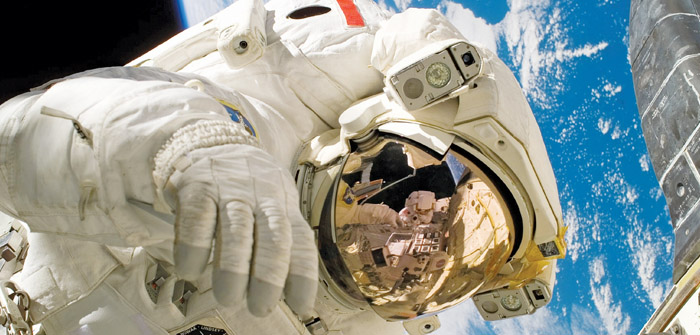(Photo | Pexels)
The space race is on again and it’s not your grandfather’s race. This one’s fueled by private technology companies beating the old military industrial complex at their own game.
The Battle of Two Superpowers
Once upon a time, a space race spurred two countries to leave the bounds of earth. In the 60’s, the USSR and the United States battled each other to be the first — USSR succeeding with Sputnik, the first man in space and the first landing of a craft on the moon. USA put more men in space and successfully landed men on the moon first with Apollo 11. NASA launched seven manned missions altogether to the moon and six successfully landed, putting 12 astronauts on the surface. Only Apollo 13 didn’t make it.
Everyone’s in the Game
Fast forward to today. China, Israel and India have all launched missions to the moon. China landed the first successful mission on the far side of the moon, deploying a lunar rover. Both Israel’s and India’s landing attempts failed.
Over the next five years, the USA, China, EU, Japan, South Korea, Germany, the United Kingdom, India and Russia have scheduled missions to the moon. The race for space is no longer the domain of two superpowers. The secrets of the moon and the prospect of setting up a steppingstone base to deep space are driving more countries to commit hundreds of millions of dollars to make sure they’re not left out.
Not Just for Nation-States Anymore
Now even private enterprises are in the space race with companies like Elon Musk’s SpaceX, Jeff Bezos’ Blue Origin, Richard Branson’s Virgin Galactic and others such as Orbital and Sierra Nevada. SpaceX has changed the space game by dramatically reducing the cost of a launch by verticalizing spacecraft production, which reduced the cost by a factor of ten; by landing boosters and recovering cowlings and reusing them. No other company can currently compete on price and reliably reuse boosters to launch another payload. On top of that, they’ve made space cool again.
Who Cares?
Space launches have become so routine, most of the world does not even take notice anymore. That is a good thing. It means there is little-to-no drama in the process because risk has been substantially reduced. The drastic cuts of cost to launch also means anyone with a few million to spare — an individual, a corporation or a country — can launch a mission. A dedicated launch by the SpaceX, the lowest cost provider, will set you back about $60 million, that beats all other competition. Hitch a ride on SpaceX with a bunch of other mini-satellites such as CubeSats, and you can launch for as little as $10,000 to $15,000. One enterprising Stanford researcher packed a CubeSat with 105 miniature chip satellites (ChipSats) that successfully launched in March 2019. The ChipSats cost about $100 each, which makes the price to launch within reach for anyone with about $25,000 to burn… in the atmosphere. The CubeSats do their measurements and then burn away in their freefall back to Earth.
A single asteroid with precious minerals, commonly known as Rare Earth Elements (REE), could be worth trillions of dollars for the first space mining operations, and with costs lowering to return vehicles to earth for reuse, the downward trend may make it economically feasible to do so. More important are asteroids containing water or ice. Water could allow the production of rocket fuel, ensuring there’s fuel stations where starships can fill up before they depart for deep space.
Manufacturing Off-Planet
With an abundance of asteroids to mine from, manufacturing in space will have abundant raw materials. The first likely production is rocket fuel, followed by components needed to repair and build spacecraft. Additionally, there is a huge advantage when manufacturing in space, creating new materials and technologies that take advantage of microgravity and hard vacuum. For example, microgravity eliminates the build of sediments and provides the perfect environment to grow crystals of much larger size and incredible purity. These crystals could drive new levels of technical advancements in chip wafers, communication, instruments and compute power. The vacuum of space can be used to subject materials to both extreme heat (i.e. focusing the Sun’s energy) and cold (close to absolute zero). Unique pharmaceuticals could be created that cannot be produced in Earth’s gravity well.
Survival of Humanity — Betting Long
Carl Sagan once said, “Extinction is the rule. Survival is the exception.” Humanity is as vulnerable to extinction as any other creature. Creating sustainable colonies off-planet seems a reasonable precaution against the inevitable. Whether it is an asteroid impact, shifting of the poles, irreversible climate change or an alien invasion, it seems prudent to create pockets of humanity off-planet. Right now, several organizations are planning permanent colonies on Mars. Elon Musk wants to put humans on Mars by 2024. Mars One, a global initiative, aims to have the first contingent of permanent Mars residents on the surface by 2031.
To the Moon… to Stay
Closer to home, Bezos and Musk have both stated their intentions of establishing bases on the moon within this decade, and NASA pulling up the rear in the 2030’s. China is determined to establish a base this decade. In June 2020, Chinese scientists announced they have developed a material from dust similar to that found on the moon that may be strong enough to build a base. If true, it means a construction team could use the plentiful moon-dust on the surface instead of transporting tens of thousands of tons of cement and steel estimated to cost at least a trillion dollars for a modest-sized moon base. China could launch a number of large 3D printers to use the lunar cement to quickly create habitats and hard surfaces.
Thanks to Entrepreneurs
I believe the revival of the space race is due to applied energy from entrepreneurs such as Bezos and Musk, instead of red-tape-tied, government-run programs, with countries like the USA, Russia and China reacting rather than leading. I believe this surge of momentum would not have happened without the innovation in space technology driven by private enterprise. Next time you order from Amazon.com or drive a Tesla, and you feel guilty for splurging… just imagine you are helping humanity’s chances of survival.
Now press that buy button.
Find Out More
bit.ly/Wiki-Space-Race; bit.ly/Wiki-List-Of-Moon-Missions; bit.ly/Wiki-List-Of-Mars-Missions; bit.ly/Moon-Colonies; https://bit.ly/ChipSats; bit.ly/China-Moon-Dust; bit.ly/Bezos-Blue-Origin; bit.ly/Musk-SpaceX
Preston Callicott is CEO of Five Talent Software, Inc. based in Bend. His hope is writing articles such as this one will allow his mind to stop waking him up at 4am with “aha’s” and “oh-my’s” about the massive impact tech has on our collective future.





